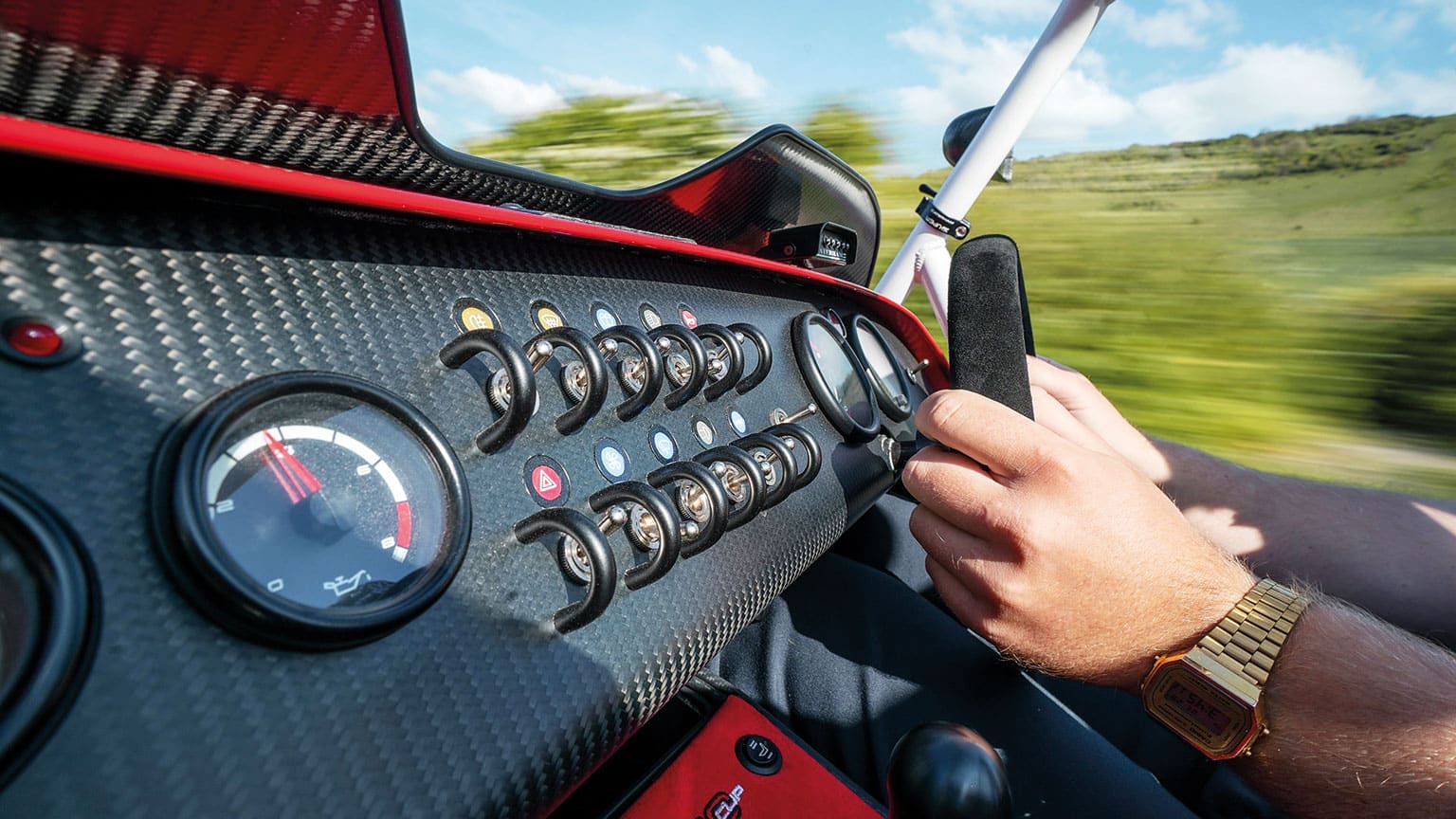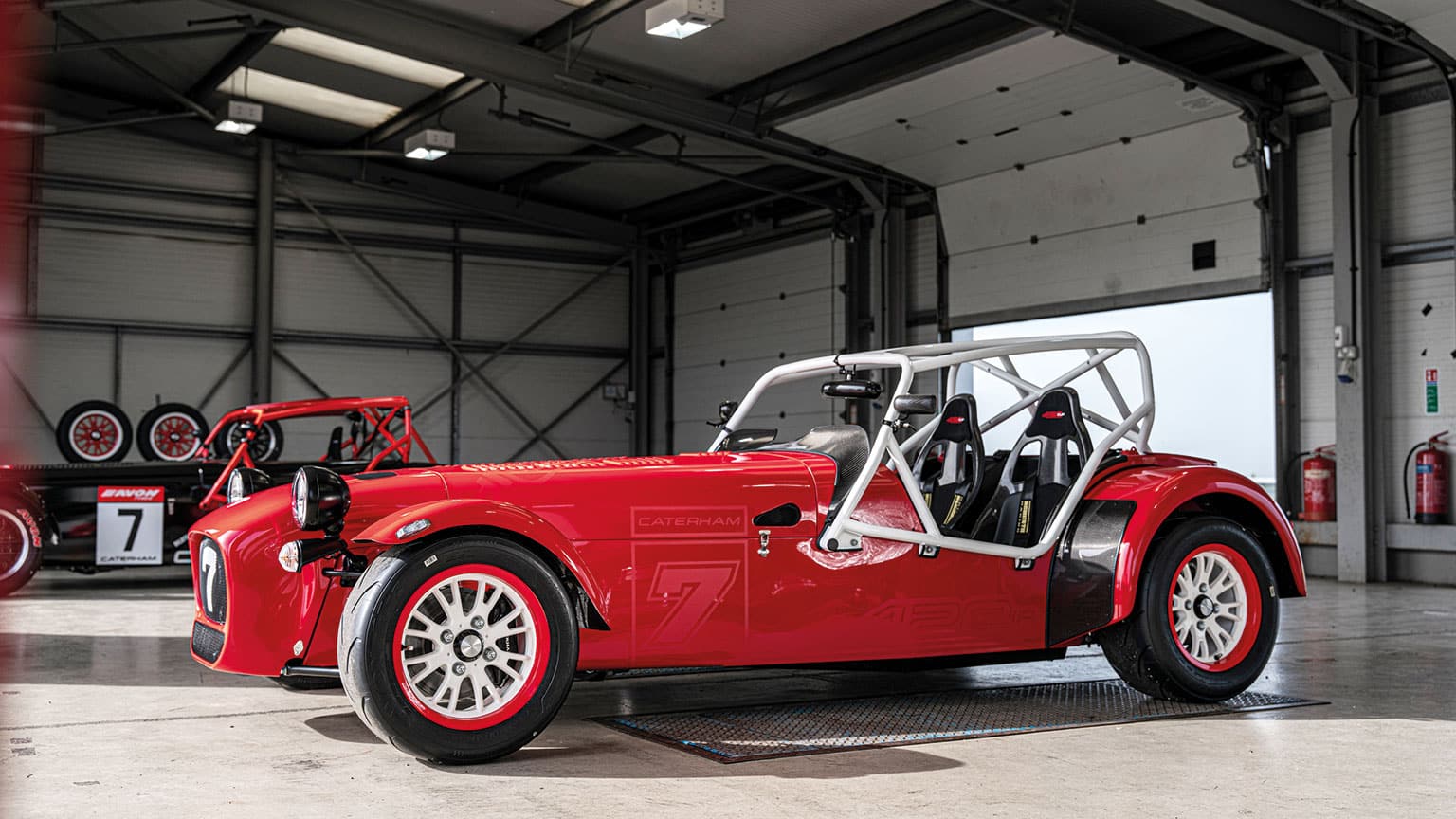2020 Caterham 420 Cup review
The 420 Cup is Caterham’s wildest road car to date, but for Andrew Frankel a few earthly comforts wouldn’t go amiss

It may seem a strange thing to say about what is by no means the most powerful car in the line-up, but this new 420 Cup is the most extreme road car Caterham has produced to date. For it is nothing less than its racing car modified just enough to earn it the right to wear a numberplate. Which sounds rather exciting, even more so when you learn the sequential SADEV gearbox of the racer is retained too, which means that when you’re flat out you don’t even need the clutch. Up or down the box.
At its heart lies a 2-litre Ford engine, tuned to give 210bhp, enough in a car weighing just 560kg to hurl you to 60mph in just 3.6sec. Like the race car, there’s no screen, roof or doors, but in their place you can choose one of three rollcages, the standard street hoop, a more substantial track day cage or the full race item. Other bits that show where it’s come from which are not found as standard on other Sevens are a set of adjustable Bilsteins, which can be set by hand through a range of ten clicks each and live within bespoke Eibach springs. And there’s all the usual other race stuff, like multi-point harnesses (though the Cup will take a passenger), track day tyres, a track day exhaust and so on. For this, Caterham charges £54,990 before you’ve chosen a single item from a bewilderingly long list of extras.
It’s not the kind of car you drive on busy roads. I have an old and comparatively pretty slow Caterham, and while you’d never choose to be stuck in traffic, there’s still plenty to enjoy from the feel of its steering to the rasp of its Weber-fed motor if you are. This is not the case in the 420 Cup. There is only one speed at which this car makes any sense at all, and that is flat out. And the problem with that is the level of performance on offer is so high, that finding somewhere, anywhere, that the Caterham can be properly exercised safely is almost impossible.

So I set an alarm for a ridiculously early hour and headed over to my favourite local mountain roads which I then had to myself. And even now I could only stretch its legs a little: the car is so fast, its grip so monumental that even a sheep idly munching away at the side of the road becomes a clear and present danger. There were bursts, albeit short ones, where I could see enough to feel a few full- throttle clutchless upshifts and I am sufficiently familiar with the topography to know where I could push the Avons to their limit, and in those fleeting moments the car was extraordinary. I’d bet all the money I have that on those roads there’s not a single hypercar on the planet that could have got away from it.
But then I thought about what I was doing, and just what had been required for those oh-so-brief glimpses of brilliance. The red-eye alarm, the journey over to the mountain road, knowledge of said road built up over 30 years, the journey home again… and I found myself wondering whether it had been worth it.

And it’s possible that a younger, more eager person than I might well have concluded that it was. But no. And here’s why: you can spend 20 grand less than this on a normal Caterham 420, and while it won’t have adjustable shockers, a fancy-pants gearbox (which is pretty unco-operative at parking speeds) and stickers, what it will have is exactly the same engine and, get this, a roof, doors, windscreen and heater. I’d enjoy it more at any time on any road, even if only for the fact you don’t have to wear a crash hat when driving it.
But of course I have missed the point of this car. It’s a track day car. Its job is to turn up at circuits and make all those flash city boys in their GT3s and 488s look pretty silly. And if that’s what you desire most, and are happy to put up with hurricane-force winds all the way there and back or put it on a trailer – in which case you might as well save money and get a real race car – then buy and enjoy. This is as visceral and vivid an entertainment as Caterham has ever provided. And they’ve done a few.
To me, however, it’s just too narrowly defined. One of the greatest joys of Caterham ownership, and why I own one rather than, say, the Ariel Atom, is that you don’t need to wait for the stars to align before it can be enjoyed. I can enjoy taking mine to the supermarket, and frequently do. I can enjoy mine in winter because it has a hood and a heater. Most of all I can enjoy mine because I can reach and breach its comparatively modest limits without scaring or upsetting anyone. And that’s what driving such cars should be about. Anything that gets in the way of that is not offering more, but less.
Caterham Seven 420 Cup statistics
• Price £54,990
• Engine 2 litres, four-cylinders, petrol
• Power 210bhp at 7600rpm
• Torque 50lb ft at 6300rpm
• Weight 560kg (DIN)
• Power to weight 375bhp per tonne
• Transmission Six-speed sequential, rear-wheel drive
• 0-60mph 3.6sec
• Top speed 136mph
• Economy N/A
• CO2 N/A
• Verdict Impracticality weighs heavy

